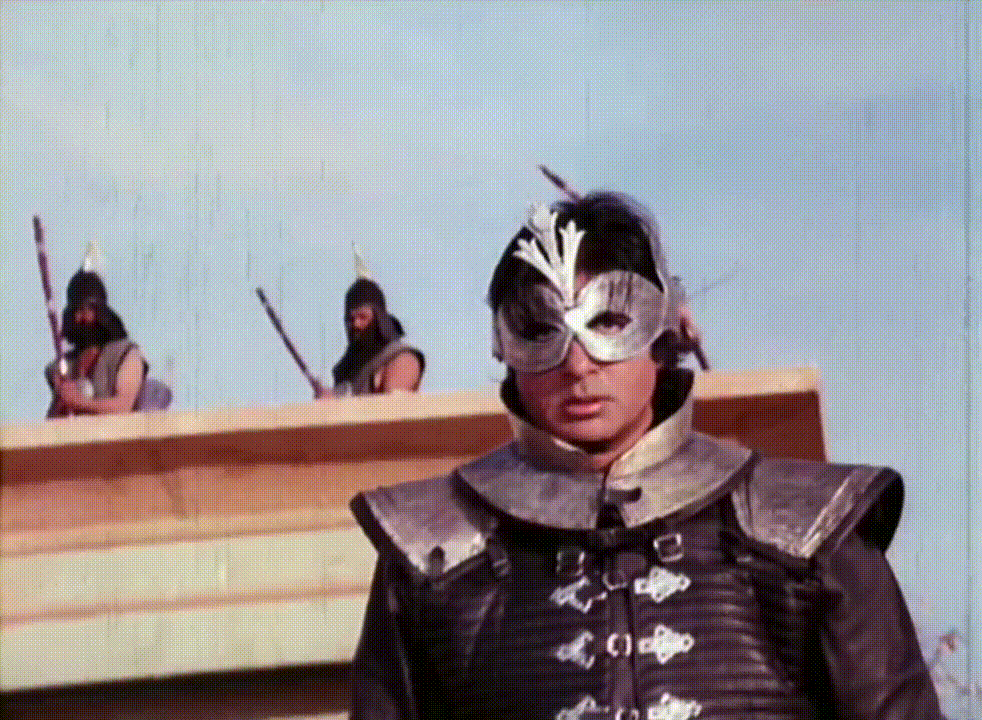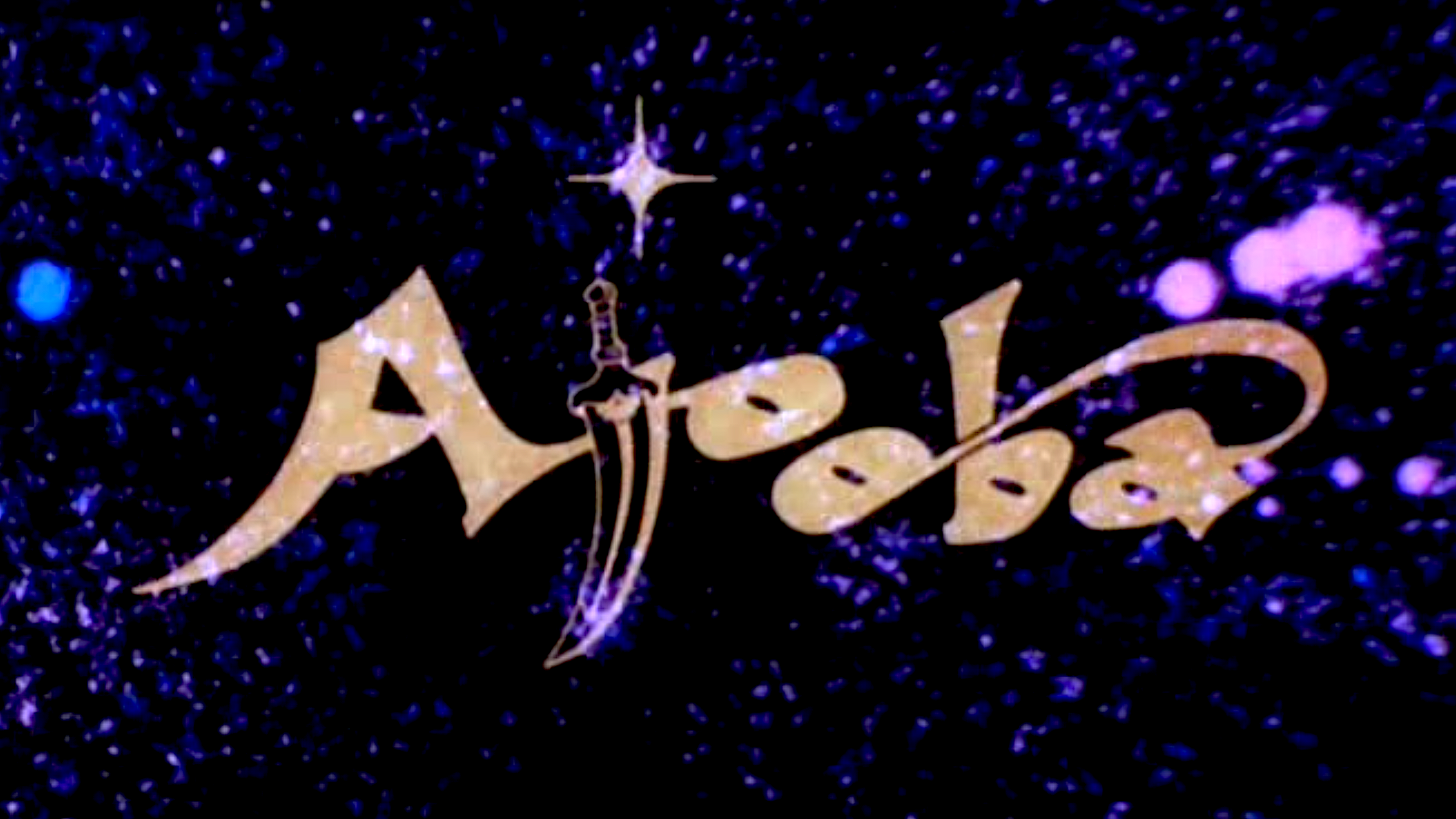My favorite movie as a child was the 1991 Hindi film Ajooba. It is not a classic, nor was it particularly successful at the time of its release. I can’t tell you with any degree of objectivity whether it’s any good, nor do I care to. I don’t think it really matters. It just happened to be the right movie at the right time for the right person, which was me in the early 90s.
I spent most of that decade in State College, Pennsylvania, a small town that is the home of Penn State University, where everyone in my immediate family but me has at some point been a member of the faculty. Penn State has always had a large proportion of international students, including many from India and other South Asian countries. This is presumably what has made it possible for a small Indian grocery store to remain in continuous operation in downtown State College, while businesses around it have come and gone. Today it stands nestled in a corner between a Starbucks Coffee and a Five Guys Burger and Fries, under a sign that reads, “Krishan Indian Market: Serving State College Since 1989.”
I was born in 1987 at the local hospital, so Krishan was a presence in my hometown for as long as I can remember. In the days before there was much interest in organic produce and no one had yet called themselves a “foodie,” stores like it filled a void. It was unlikely you would be able to find fenugreek or curry leaves at the Weis Market down the highway. You certainly wouldn’t be able to find a pre-blended box of Shan Masala, for whatever dish you may have been trying to reproduce as a homesick Indian graduate student. You probably still can’t. But you could buy it at Krishan Indian Market, starting in 1989.
For my family, Krishan provided another, equally important resource. Behind the counter were rows upon rows of videocassettes of Hindi films. Some of these were official releases, and some were copies dubbed onto blank tapes, with the tabs popped out for posterity. This was a mom and pop bootlegging operation, and I assume the tapes were distributed through an extended family network with the modest goal of giving immigrants in one small town in America access to the world of Indian cinema.
You could rent a tape for a small fee, which my father would do frequently. He especially liked the movies of Raj Kapoor, an early Bollywood auteur and actor who styled himself after Charlie Chaplin, in movies like Awaara and Shree 420. The latter is a comedy about a small-time con artist; in the Indian penal code, Section 420 prohibits “dishonestly inducing delivery of property.” Somehow it has nothing to do with marijuana. Kapoor’s movies were beloved in the Soviet Union, where Hindi cinema was seen as an alternative to the imperial reach of Hollywood.
My parents were a bit anxious about what movies they let my brother and me watch as children. Like many parents, both immigrant and not, they saw American cinema as potentially hostile territory, full of sex and violence and teenagers not finishing their homework. But what South Asian parents in particular may be missing is the risk of exposing impressionable children to the elaborate family tragedies, feuds, and betrayals that form the plots of much of Bollywood cinema.
The biggest star of Indian cinema while I was growing up was Shah Rukh Khan, whose Wikipedia page says that according to a “popularity survey” is better known around the world than Tom Cruise. (I have not been able to locate said survey.) I remember a great deal of anticipation around his 1998 film, Duplicate, a sci-fi thriller which we were urged to see by relatives and which turned out to be fairly idiotic. On the other hand, many of Khan’s more straightforward romcoms like 1995’s Dilwale Dulhania Le Jayenge, which holds a status in the Indian diaspora akin to When Harry Met Sally or Pretty Woman, are hard to resist.
I myself preferred an actor who fell in the middle, chronologically speaking, named Amitabh Bachchan. Today, he is usually referred to in the Indian press as “The Big B,” though I have never heard of someone calling him this in real life. He may only be known to western audiences for his appearance in Baz Luhrmann’s The Great Gatsby, which I still haven’t gotten around to seeing, sorry, I know it turned out to be better than you expected and you actually kind of enjoyed it.
I thought, and mostly still think, that Amitabh was extremely cool. He effectively conveyed grave determination, or anguished grief, or righteous indignation, with sufficient intensity to fill up screens of any size. This served him well at the beginning of his career, when he was designated the “angry young man” of 70s Indian cinema. Unlike the generally good-natured Raj Kapoor, he frequently played roles that showed a dark side. He was a fugitive in Zanjeer, a rebellious antihero in Deewar, and an honorable bandit in Sholay. Gradually, though, he kind of shifted gears.
Most of the time, Amitabh is kind of a ham. Over the years, he has undercut his own leading man status by constantly acting silly. In Don, he plays both a comically sleazy mob boss and a village idiot lookalike. Confusion ensues. He performs an almost identical dual role in The Great Gambler, which has an incredible soundtrack by R.D. Burman.

This is not to say his appearances became entirely frivolous. Amar Akbar Anthony, about three brothers separated at birth and raised in different religions, is mostly outlandish. But in the process, it contains a principle that has often been threatened in the Indian subcontinent, rendering religious groups often at odds a literal brotherhood.
Most Hindi films are musicals, and their songs have made up the majority of Indian popular music since the 1950s; the industries are so aligned, the music is sometimes called “filmi.” My father saturated the house with this music throughout my childhood—he preferred the early stuff, which comprises a body of work comparable to the songs the Gershwins and Irving Berlin and the rest wrote for Fred Astaire in this hemisphere. Hindi cinema was so much a part of the landscape that I hardly noticed it. I didn’t really sit down to watch any of these movies on purpose until college, probably mostly out of homesickness.
I once had some friends over to my apartment and we watched Don. Everyone was delighted by it except one guy, a friend of a friend who had tagged along. He was appalled, on behalf of some kind of objective aesthetic standard that proves that, I don’t know, Pulp Fiction and Goodfellas are the only good movies. He voiced his objections repeatedly, decrying the cultural relativism that led the rest of us to enjoy Don. “Is this supposed to be good? It’s stupid. What’s good about this?”
At the time, I patiently answered his questions, making a case for why kitsch and camp can have aesthetic merit, how texts are interpreted within cultural contexts, that artworks can function on multiple levels—you know, real English major stuff. I never saw the guy again. But I would like to imagine that today, at his office at Goldman Sachs or whatever, he comes across this article. I don’t remember your name but I’d like to say to you now what I should have said then: fuck off and get out.
I suppose it’s confusing to someone used to a range running from John Wayne to Robert De Niro to process an action hero who acts as goofy as Amitabh often does. If you don’t speak Hindi—and if you do speak Hindi, you don’t need me to explain this, because you already know who Amitabh is—consider this scene from Namak Halal, in which Amitabh’s character demonstrates his prowess at speaking English.
Or you might want to try this song from Amar Akbar Anthony, which is also partly in English. In this song, Amitabh’s character, Anthony Gonsalves, introduces himself.
Ajooba comes at the point that Amitabh’s career has frankly begun to decline. I have not seen many other films of his from this period. I couldn’t finish 1989’s Jaadugar, about a real magician who can actually do magic but chooses to do fake magic as a stage magician instead. Ajooba is more ambitious, something like a cross between Robin Hood and Batman. It’s actually based on 1,001 Nights, if you want to get technical, and was produced in collaboration with Gorky Film Studio in Moscow.
I haven’t seen it in multiple decades now, but I’m going to describe it without watching it again, because it’s like three hours long. Basically, there’s a land with a good king where things are going pretty well. But a wizard, played by an actor you may recognize as the villain in Indiana Jones and the Temple of Doom, kills the king and queen. However, their son survives, having been floated down a river in a wicker basket. I’m not going to read the Bible for the purposes of this essay either but I’m pretty sure that’s in there somewhere. However, in a departure from the Biblical model, he is adopted not by a kindhearted but infertile couple, but by a dolphin (yes the fish). Later, he tells a woman he’s courting that he’s going to introduce her to his mom and they go to the ocean and a dolphin swims up.
Okay, anyway. He becomes some kind of bandit with a badass costume, called Ajooba, which one online dictionary defines as “that emotion which is excited by novelty, or the presentation to the sight or mind of something new, unusual, strange, great, extraordinary, or not well understood.” On horseback, he battles the regime of the evil wizard. Eventually though, the wizard builds a large-scale model of Satan, and then, through some wizardly process, it actually becomes Satan. (There’s something like this in the Bible too, I don’t know the details but trust me, it’s in there.)
So there is a final showdown. The highlight of this sequence is when Ajooba approaches the castle of the evil wizard, and henchmen shoot at him with bows and arrows. What he does is, and I’ve included evidence below, he catches the arrows with his hands and then throws them back at the guards, nonchalantly killing them all.

I’m forgetting where the shrinking potion, giant crab, and swordfight on flying carpet come in, but they’re in there too. I’m sure I’m leaving out some major plot twists that blew my mind on first viewing.
It remains difficult for western audiences to appreciate Hindi films. Even classics of world cinema, like Raj Kapoor and Guru Dutt’s best work, have never been given accurate English subtitles, and no American distributors have given them official releases. Hindi is the third most spoken language in the world, after Mandarin and English, but curatorial inventories of film often overlook it completely—the Criterion Collection, for example, includes no films in the language. Ajooba may not be not the best choice to make a case for the merits of Hindi cinema. But you have to start somewhere.
Shuja Haider






